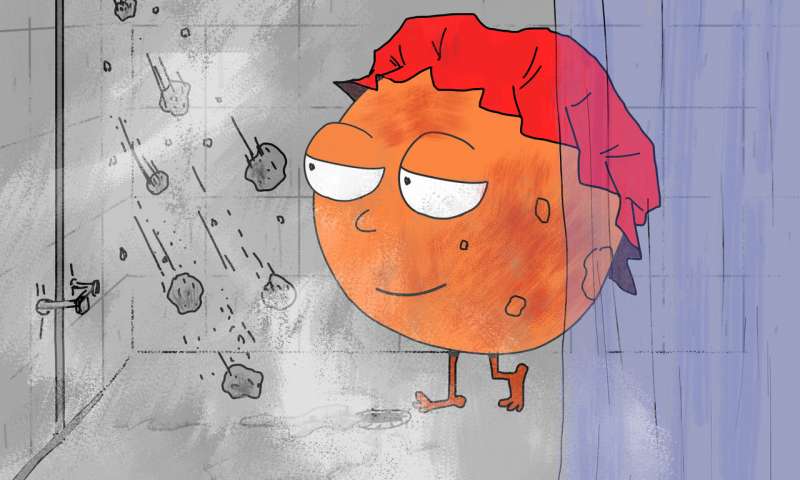Asteroids and comets appear to be a much more important supplier of organic molecules on Mars than expected. Until now, astronomers assumed that the organics on Mars mainly came from dust particles from space. Now, computer simulations by an international team of researchers led by Dutch astronomers indicate that one third of the material comes from asteroids and comets. The findings have been accepted for publication in the scientific journal Icarus.
In 2015, the Mars rover Curiosity discovered remnants of organic molecules on Mars. Scientists wondered how these organic molecules had ended up on Mars. The prevailing theory was that the molecules were tied to interplanetary dust particles. Those particles are everywhere. For example, around our earth we see the dust particles when they enter our atmosphere and cause “shooting stars.”
An international team of researchers from SRON Netherlands Institute for Space Research, the University of Groningen, Utrecht University and the University of California Santa Barbara, suspected that the theory of the dust particles could not be the whole story. The scientists assumed that some of the organic molecules might be delivered by asteroids and comets. To investigate this, they built a computer model of our solar system including hundreds of thousands of asteroids and comets. Then they used Peregrine, the supercomputer of the University of Groningen, to run the computer model for a few weeks.
The calculations show that 192 tons of carbon per year end up on Mars. That is comparable to 8 truckloads. Approximately 129 tons (67 percent) of carbon come from interplanetary dust particles. But asteroids also deliver another 50 tons per year (26 percent) and comets provide about 13 tons (7 percent) of the organic material.
The research has consequences for future and current Mars missions. Mars rovers, according to the astronomers, should look closely at the impact craters of asteroids. In those places, a lot of organic material could be found.
Find your dream job in the space industry. Check our Space Job Board »
Furthermore, the research also has implications for the chance of life on exoplanets. The Groningen Ph.D. student Kateryna Frantseva, who led the research, explains: “Near other stars, there are also exo-asteroids and exocomets that can shower the surfaces of exoplanets with carbon. If, on top of that, there is water, then you have the required ingredients for life.”
Now, the researchers focus on the planet Mercury, where water has been found. They want to estimate how much water on Mercury can be delivered by asteroids and comets. After that they want to extend their research to planetary systems around other stars.
Provided by:
Netherlands Research School for Astronomy
More information:
Kateryna Frantseva et al. Delivery of organics to Mars through asteroid and comet impacts, Icarus (2018). DOI: 10.1016/j.icarus.2018.03.006
Image:
Cartoon of the planet Mars that is showered with organics. According to calculations, 33% of the organic material on Mars comes from asteroids and comets. Only 67% comes from interplanetary dust.
Credit: Anastasia Kruchevska











